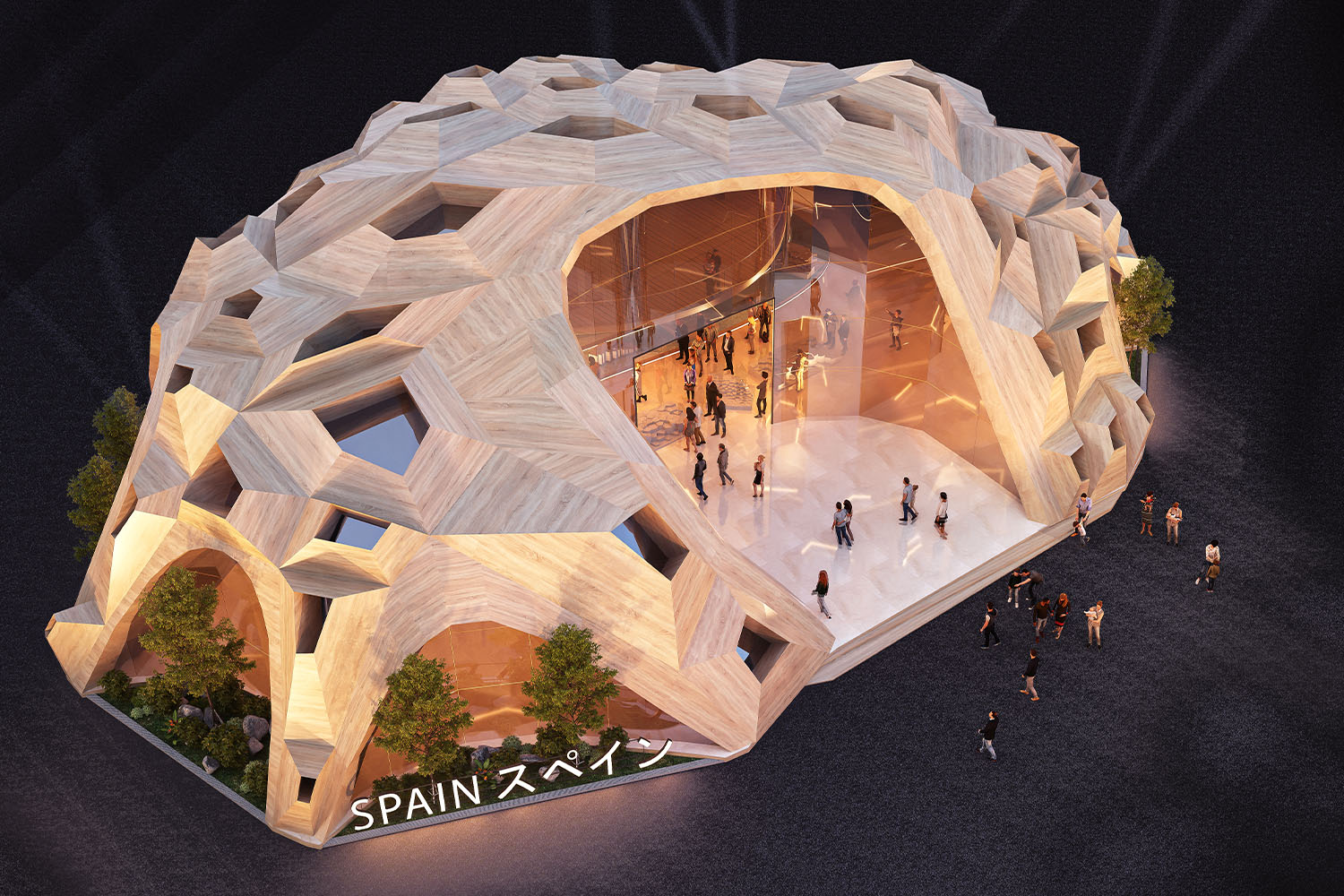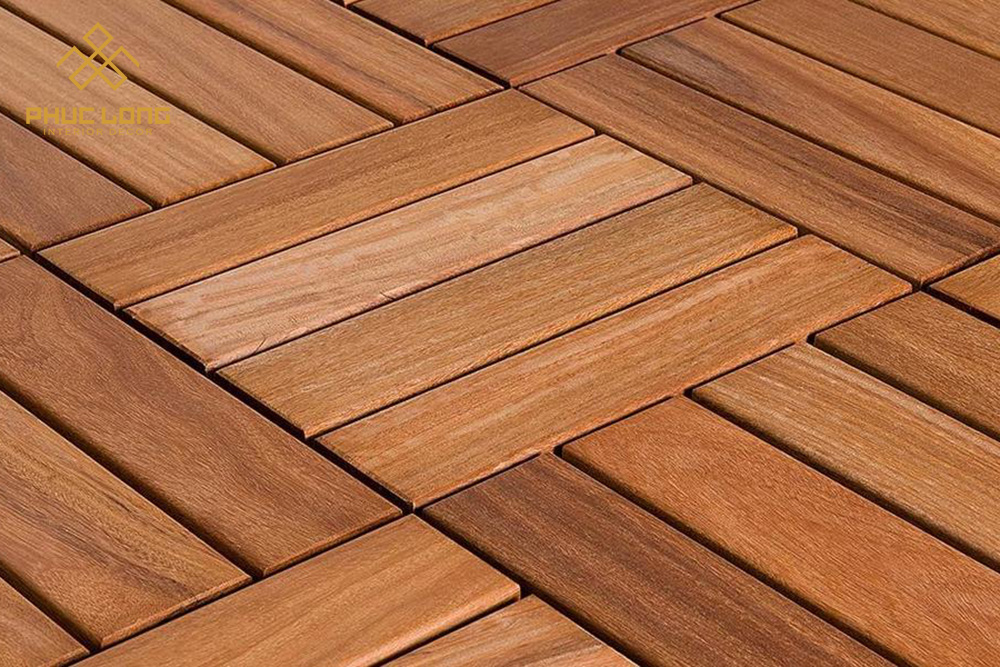In this article, VietnamWood will introduce in detail a specific classification of veneer, known as knotty oak veneer. Veneer appears quite frequently in the collection of interior decoration for households. Some specific furniture items such as tables, chairs, kitchen cabinets, beds, decorative shelves, or interior decoration in cars are made from it, and it is also used to make some musical instruments like guitars, violins, pianos, etc.
This material was developed as an optimal solution to conserve natural resources that are at risk of depletion due to long-term exploitation. It helps protect forest resources and valuable wood in various countries. Veneer doesn’t have a specific unified classification, but it can be categorized based on the type of wood material that manufacturers use for the thinning process.
Learn about knotty oak veneer
So, what is knotty oak veneer? It refers to a type of wood veneer that is made from oak wood with a distinct and prominent grain pattern characterized by knots or burls in the wood. These knots are the result of irregular growth patterns in the oak tree, and they create unique and visually appealing features in the veneer.
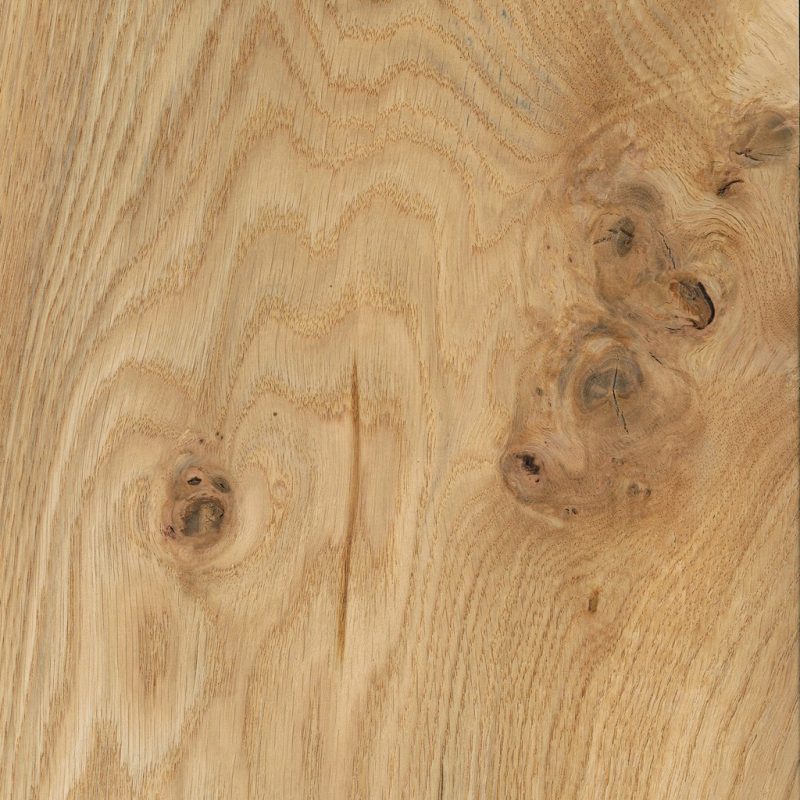
Oak veneer is created by slicing or peeling thin sheets of oak wood from a log, which are then applied to various surfaces such as furniture, cabinets, doors, or wall paneling to give the appearance of solid oak wood. When the oak veneer includes knots or burls, it adds a rustic and natural look to the finished product, as the knots are often left exposed and may be a focal point of the design.
Properties of knotty oak veneer
Knotty oak veneer has several properties and characteristics that make it a popular choice in woodworking and interior design. Some of the key properties include:
| Color | Oak typically has a light to medium brown color. The specific shade can vary depending on the species of oak and the finishing applied to the veneer. Oak veneer can be stained or finished to achieve different colors and tones to match various design schemes. |
| Appearance | The prominent feature of knotty oak veneer is its distinctive grain pattern, which includes knots, burls, and irregularities in the wood. This gives it a rustic and natural look, making it a popular choice for those seeking a warm and character-rich aesthetic. |
| Texture | Oak veneer has a relatively coarse and open grain texture, which is accentuated by the presence of knots and burls. This texture can be a desirable feature for those looking for a tactile and visually appealing surface. |
| Durability | Oak is known for its durability and strength, and this trait carries over to oak veneer. It is resistant to wear and tear, making it suitable for use in high-traffic areas like flooring and furniture. |
| Adaptability | Knotty oak veneer can be applied to various surfaces, including furniture, cabinetry, wall paneling, and flooring. Its versatility allows it to be used in both residential and commercial settings. |
| Cost | Oak veneer is often more cost-effective than solid oak wood, making it a budget-friendly option for achieving the look and feel of oak without the higher price tag. |
| Availability | It is readily available in various thicknesses and sizes, making it accessible for a wide range of woodworking and design projects. |
| Finish options | Can be finished in various ways, including clear finishes that enhance its natural appearance, or it can be stained to achieve different colors and tones. It can also be finished with matte, satin, or glossy coatings, depending on the desired look. |
Advantages of knotty oak veneer
- Aesthetic Appeal: Knotty oak veneer has a rustic and natural look with distinctive grain patterns, knots, and burls. This unique appearance adds character and warmth to interior spaces, making it a popular choice for those seeking a cozy and inviting ambiance.
- Cost-Effective: It is generally more affordable than solid oak wood. This makes knotty oak veneer an attractive option for achieving the look of oak without the higher price tag associated with solid wood.
- Versatility: This type of veneer can be applied to various surfaces such as furniture, cabinetry, doors, and wall paneling. Its versatility allows it to be used in a wide range of interior design projects.
- Environmental Benefits: By using veneer, you can achieve the appearance of oak while using less solid wood. This can contribute to the conservation of oak resources and reduce the environmental impact of using solid wood.
- Ease of Installation: Veneer is generally easier to work with and install compared to solid wood, especially for intricate or curved surfaces.
Disadvantages of knotty oak veneer
- Durability: While oak is known for its durability, the thin layer of veneer is not as robust as solid oak. It can be more prone to damage, such as chipping or peeling, especially in high-traffic areas.
- Maintenance: This type of veneer may require more maintenance than solid oak. It can be sensitive to moisture and temperature fluctuations, and if not properly cared for, it may warp or delaminate.
- Limited Refinishing: Over time, veneer can wear or become damaged. Unlike solid wood, which can be sanded and refinished multiple times, veneer has a finite thickness, so it can only be refinished a limited number of times.
- Appearance Consistency: The appearance of knotty oak veneer can vary from one sheet to another, which can make it challenging to achieve a uniform look in large projects. Some people appreciate this natural variation, while others may find it less desirable.
- Sustainability Concerns: While veneer can contribute to resource conservation, the sustainability of the veneer product depends on responsible sourcing practices. It’s essential to ensure that the veneer you use comes from sustainably managed forests.
As you can see, knotty oak veneer is still widely used in manufacturing and daily life because it offers many advantages to both users and manufacturers. However, alongside its advantages such as color variety, aesthetic appeal, and cost-effectiveness, it also has a few limitations, such as the need for careful maintenance and a lower level of durability.
What is knotty oak veneer used for? Why?
Knotty oak veneer is a favored choice in the realms of interior design and carpentry due to its rustic allure and the inviting, earthy ambiance it imparts to any setting. Its versatility allows for crafting furniture that exudes a traditional or rural sensibility, while also infusing distinctive character into cabinets and architectural features. This veneer variety finds frequent application in both residential and commercial contexts, adding a unique woodgrain texture to the surroundings.
Furniture
The use of veneer in interior design and furniture manufacturing is no longer unfamiliar, and the same applies to knotty oak veneer. It is often used to create a wide range of furniture pieces, including tables, chairs, dressers, cabinets, and more. Its rustic appearance can add character and warmth to furniture designs. Its unique patterns will also provide you with a distinctive and fresh living space that stands out and is less common.
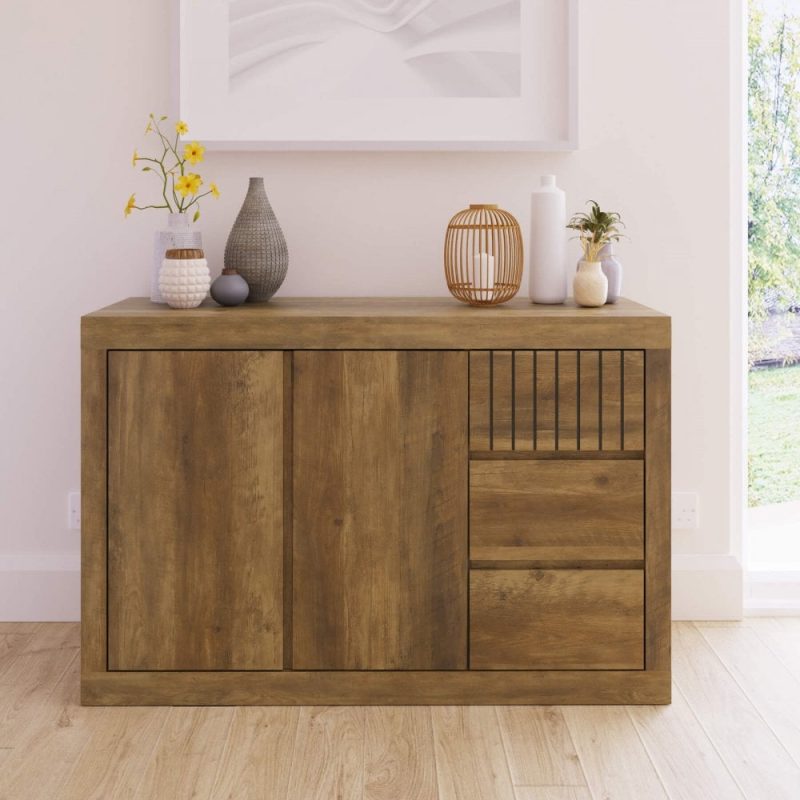
Cabinetry
It is commonly applied to kitchen cabinets, bathroom vanities, and built-in storage units. The knotty oak veneer can give these cabinets a unique and appealing look. This will create focal points in spaces that we often overlook in terms of decoration, such as the kitchen or bathroom, adding a sense of prominence to your home.
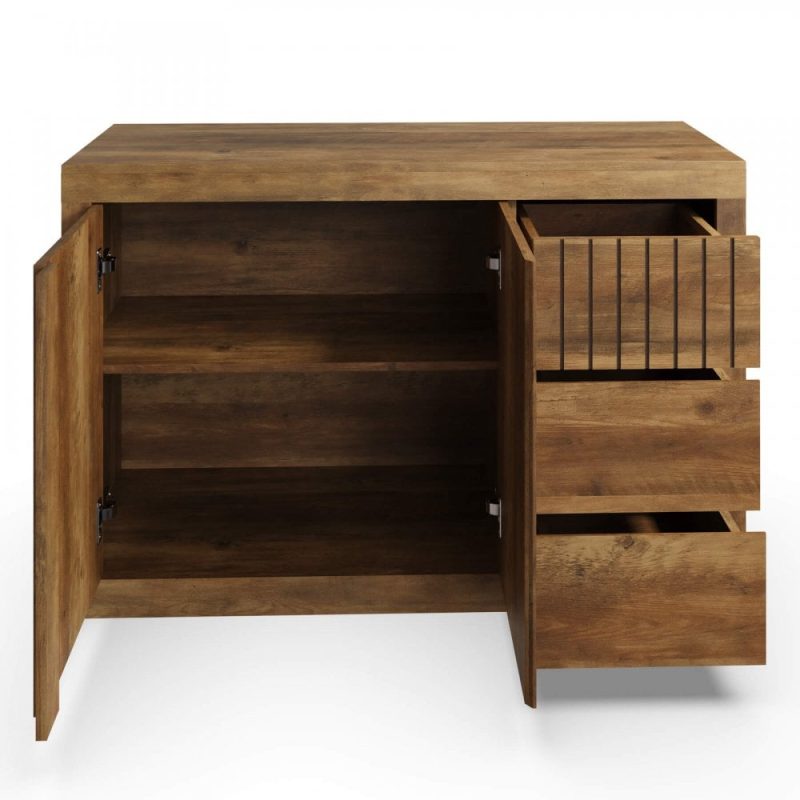
Doors
Interior doors, especially those with a rustic or country-style aesthetic, may feature knotty oak veneer on their surfaces. What could be more splendid than a door, the first thing everyone sees when entering a home, adorned with the beauty of natural oak wood, enriched with unique and intertwined knotty patterns? It’s sure to be a standout feature of your home.
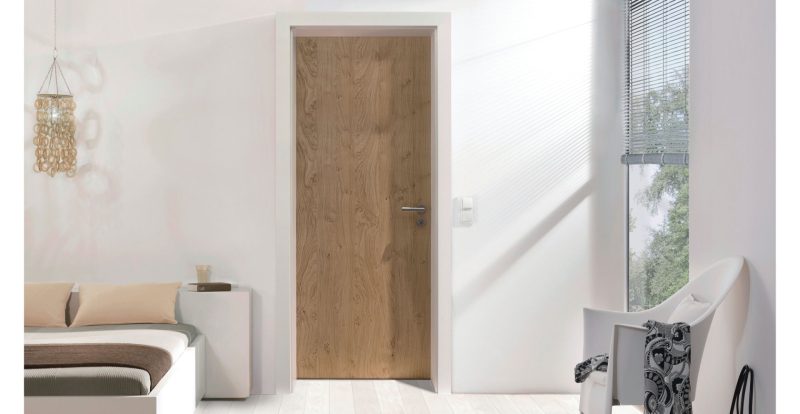
Musical Instruments
Some musical instruments, such as guitars, violins, and pianos, use knotty oak veneer for their outer surfaces, contributing to their aesthetics. This is a particularly unique application of this type of veneer because it already possesses a distinctive appearance compared to other veneer types. This high level of individuality adds a personalized touch, especially in the realm of art and design.
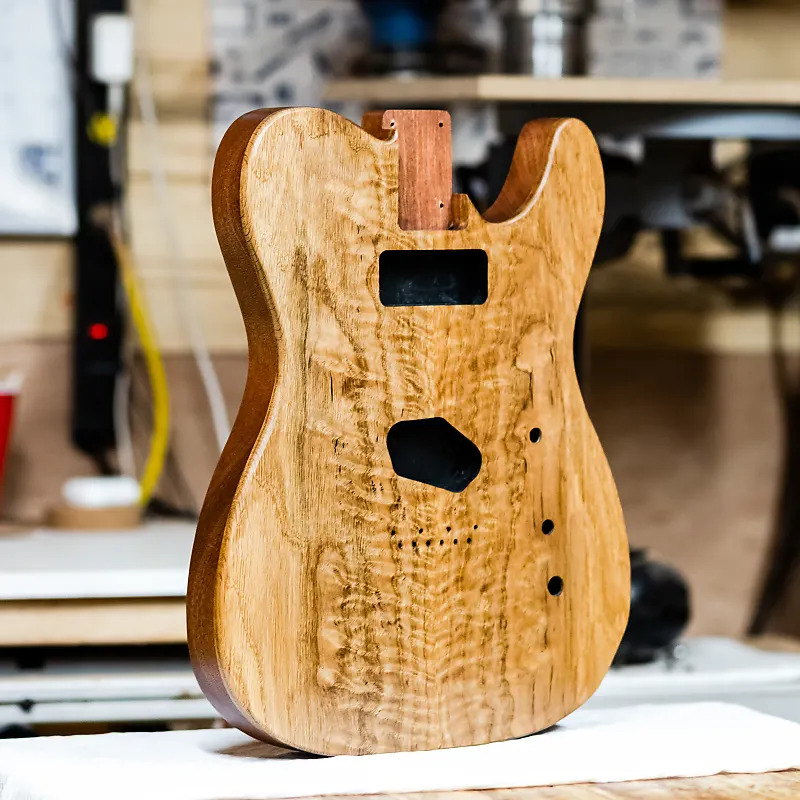
Decorative Accents
Knotty oak veneer is frequently employed for decorative purposes, unleashing its potential in crafting custom wall art that resonates with individual style and aesthetics. It can also be harnessed to fashion decorative shelves that not only serve as functional storage solutions but also enhance the visual appeal of any room. Additionally, when applied to tabletops, it bestows a one-of-a-kind, eye-catching appearance, making each piece of furniture a conversation starter and a focal point in interior spaces..
Boat Interiors
Thanks to its captivating aesthetic allure and its capacity to withstand specific environmental challenges, knotty oak veneer is a popular choice for enhancing the interiors of boats. Its decorative utility extends beyond the standard marine materials, adding a touch of elegance and warmth to these confined spaces. Whether it’s used for wall paneling, cabinetry, or decorative accents, it serves both functional and aesthetic purposes in boat interiors, elevating the overall maritime experience.
The previous examples highlighted some applications of knotty oak veneer aimed at enhancing the aesthetic appeal and quality of furniture as well as interior spaces. The inherent natural beauty it lends to each application is undeniable, which is why it continues to be widely favored by designers and craftsmen.
Read more: What is 3D Wood Veneer? 6 Most Common Types of 3D Wood Veneers
Price of knotty oak veneer
The price of knotty oak veneer can vary widely depending on several factors, including the quality of the veneer, the thickness of the veneer sheets, the supplier or manufacturer, and the geographic location. Here are some general considerations that can affect the price of this veneer type:
- Veneer Quality: Higher quality knotty oak veneer with fewer imperfections, such as knots and burls, is likely to be more expensive.
- Veneer Thickness: Thicker veneer sheets tend to be more costly than thinner ones. The thickness can affect the durability and appearance of the veneer.
- Supplier/Manufacturer: Different suppliers and manufacturers may offer varying price points for knotty oak veneer. Established and reputable suppliers may charge premium prices.
- Finish and Grading: The type of finish applied to the veneer and the grading (such as A, B, or C grades) can influence the price. Clear finishes or higher-grade veneers may be priced higher.
- Quantity: Purchasing larger quantities of knotty oak veneer may lead to volume discounts, which can lower the per-sheet or per-square-foot price.
- Geographic Location: Prices can vary by region and country due to factors such as supply and demand, labor costs, and transportation expenses.
To get an accurate price for knotty oak veneer, it’s advisable to contact suppliers or manufacturers directly for quotes. Additionally, prices can fluctuate over time due to market conditions, so it’s a good idea to obtain current pricing information when planning your project.
Read more: Eco Veneer – One of the Best Sustainable Alternative Material
VietnamWood – The best knotty oak veneer supply platform today
With the advantages mentioned above, it’s evident that the potential of knotty oak veneer will continue to grow in popularity in the future. For businesses, this is an opportunity for investment and production, and for individual customers, DIY home furniture projects using knotty oak veneer have become a trend in recent years, offering both cost savings and a fresh look for their homes.
VietnamWood has a network of over 1000 wood manufacturing businesses and wood product suppliers within the territory. If you’re interested in learning more about pricing or seeing knotty oak veneer products up close, please don’t hesitate to contact us through the messaging section on our website. VietnamWood is more than happy to address any inquiries you may have regarding these products.
Through the preceding article, it becomes evident that veneer comes in a diverse array of types, each with its own utility, characteristics, advantages, and unique qualities. Knotty oak veneer, in particular, is regarded as one of the most common and widely used veneer types, owing to its undeniable merits. It is our hope that this article by VietnamWood has provided you with a fundamental understanding of this type of veneer.


